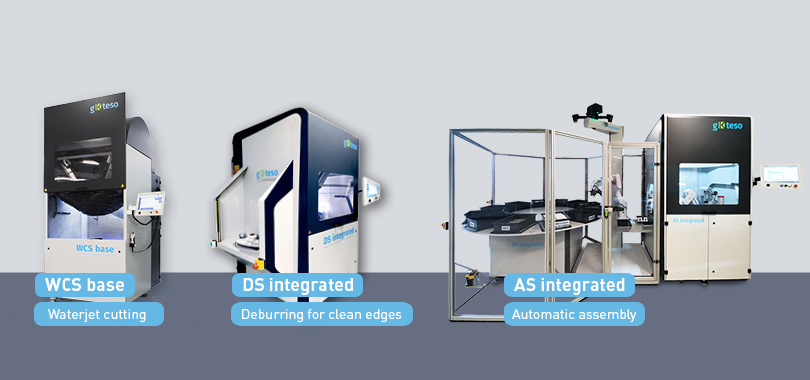Deburring of workpieces via automated deburring cells
Efficient post-processing of workpieces requires two things most of all: automated deburring systems with a high economic efficiency factor and experts in operation of these systems. Many companies outsource post-processing of their small- and medium-sized series workpieces to external service providers. The production lanes that would have been needed for the individual work steps of CNC post-processing of workpieces would have been too bulky and elaborate.
This method led to long transports, higher costs and high time expenditure – factors that had negative effects on efficiency and economic efficiency of the companies. Solutions that required little space, time, money and effort were needed.
Basic prerequisites for efficient post-processing of workpieces
In particular small and medium-sized series come with a great economic effort. Due to small piece numbers, workpieces are often post-processed at manual workplaces – with a risk. Manual workplaces are manned with people who may be unable to work due to illness or other factors. In such cases, work will remain undone or passed on to colleagues, who will soon break down under the stress and work accordingly negligently.
Additionally, efficiency and quality generally must be questioned with this procedure. People may deburr workpieces precisely, but are still much less precise than deburring systems can be. In case of complex workpieces, the often-difficult post-processing of difficult to access processing surfaces is an issue as well. Efficient post-processing of workpieces therefore requires automated systems for post-processing of workpieces with several methods and reliable operators of these systems.
Post-processing of workpieces with modern deburring cells
Post-processing of workpieces via modern deburring cells offers an economically efficient solution at high precision. Equipped with multi-dimensionally working arms, these deburring cells permit precisely tracked CNC post-processing of simple and complex workpieces. With a track accuracy of up to 0.1 mm, the deburring cells deburr much more precisely than people could.
Since they are available as stand-alone systems, they can be integrated into existing production lanes. External service providers are therefore no longer necessary and longer transport paths are dispensed with. This is decisive in particular in post-processing of workpieces with tight schedules.
An automated deburring cell processes up to 1 million workpieces per year – a number that is difficult to handle and causes high personnel costs. For this reason, efficient post-processing of workpieces via automated deburring cells will be a good alternative to manual workplaces and large robot workplaces in future.



 Download Datasheets
Download Datasheets